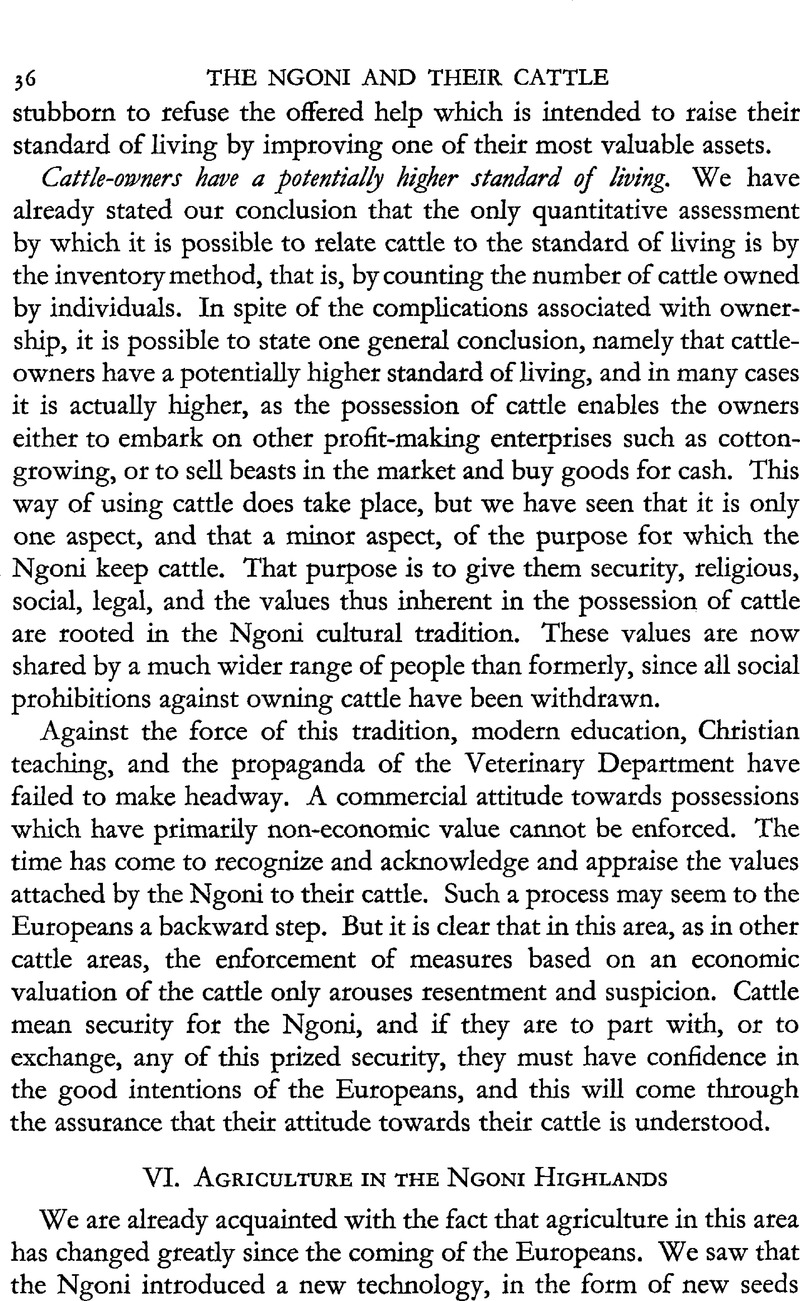No CrossRef data available.
Article contents
VI. Agriculture in the Ngoni Highlands
Published online by Cambridge University Press: 21 August 2012
Abstract

- Type
- Native Standards of Living and African Culture Change
- Information
- Copyright
- Copyright © International African Institute 1938
References
page 38 note 1 See review by Professor Malinowski of Dr. Buxton's, DudleyPrimitive Labour (Nature, Dec. 1935).Google Scholar
page 38 note 2 A translation from the original Nyanja.
page 39 note 1 mibadwo ya pakati is the name given to the people of about 30-50 to-day, who grew up during the early European occupation of the country. They are distinguished from the mibadwo ya kale (the former generations) and the mibadwo ya tsopano (the present-day generations).
page 39 note 2 This was written by the Paramount Chief himself.
page 39 note 3 Chakudya cheni cheni. Tradition says that these millets were the only seeds brought from the Zulu-Swazi area and that they found maize on the way north.
page 39 note 4 Kusamala = to care for, tend, as of a child or a garden.
page 40 note 1 See B.C.A. Gazette, 1894.Google Scholar
page 40 note 2 Kupala = to lift the weeds and surface soil.
page 40 note 3 Kupandira = to cover the weeds thoroughly so that they may die.
page 41 note 1 I have just received word that the Paramount Chief, at a recent meeting of his chiefs and headmen, has decreed that every one must practise the Ngoni method of cultivating. But I have not been able to confirm this and I do not know how it is to be carried out.
page 41 note 2 Young men of fighting age.
page 41 note 3 The people of the amilaga or conquered villages had to obey the same voice of authority though with possibly fewer compensations.
page 42 note 1 I have seen young men at a communal hoeing shouting and challenging each other: ‘Here we are men! See how we hoe!’
page 43 note 1 That is, a daughter or granddaughter or other relative may still learn Ngoni methods from the older women. But this knowledge is not now spread beyond the family circle.
page 43 note 2 Professor Malinowski considers that such rites are on the border line between magic and religion. I think these Ngoni rites were definitely part of ancestor worship and therefore really religious in essence. (See Prof. Malinowski's article on ‘Magic, Science and Religion’, in Science, Religion and Reality, ed. by Dr. Needham, J..)Google Scholar
page 44 note 1 See p. 9.


